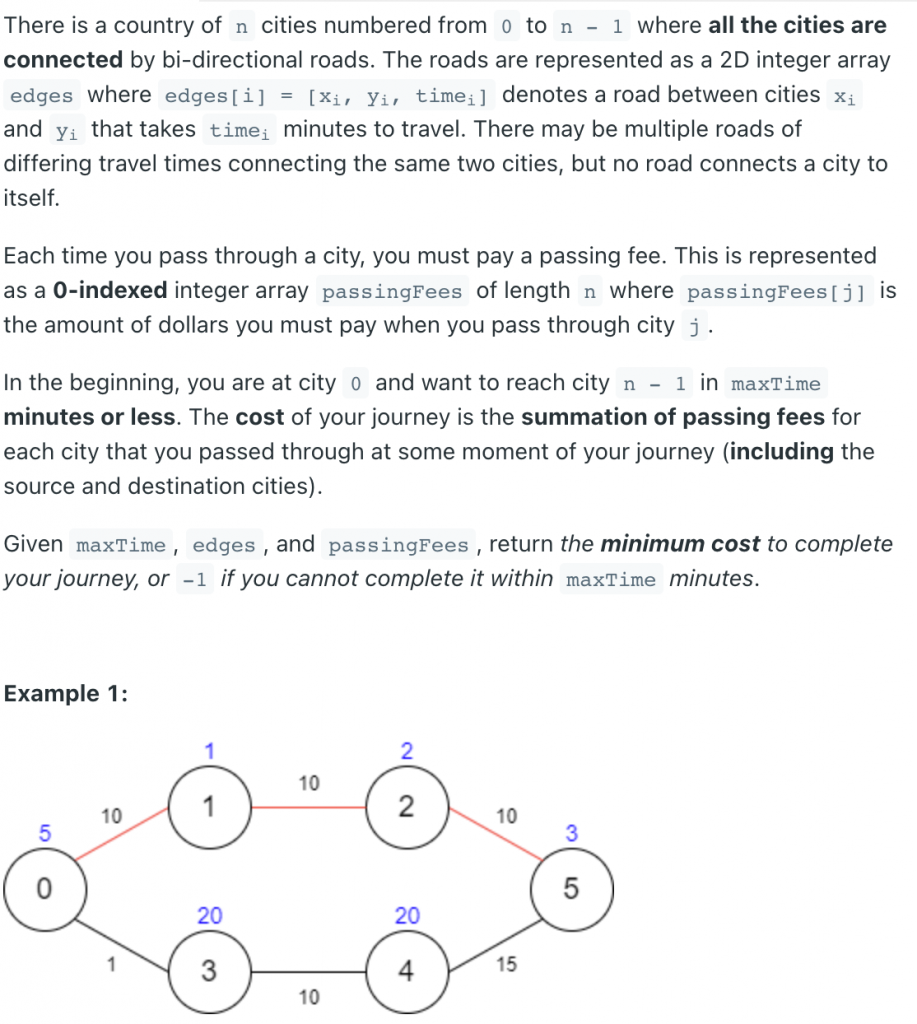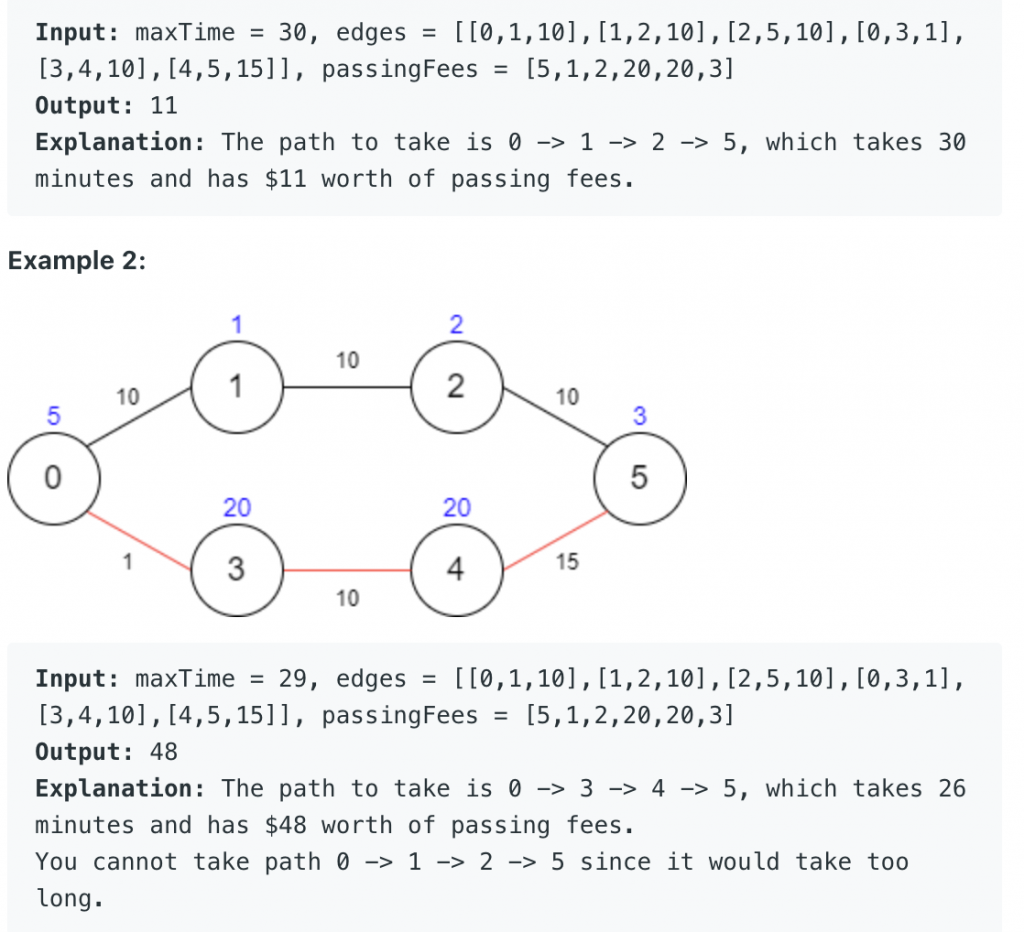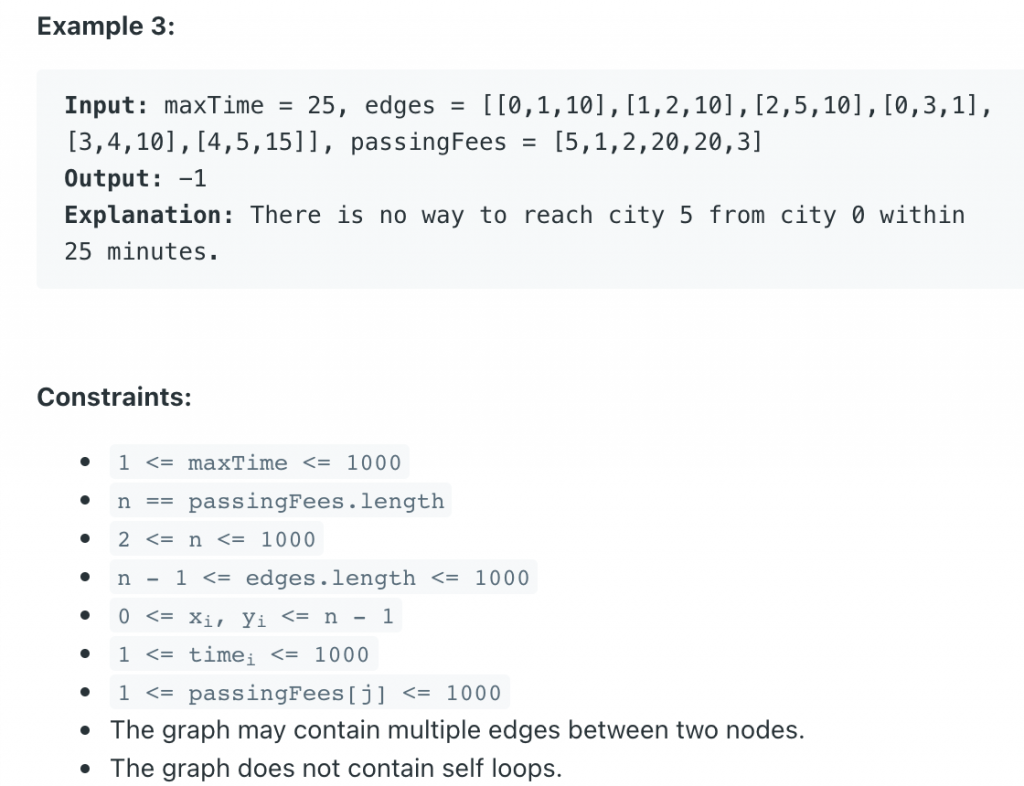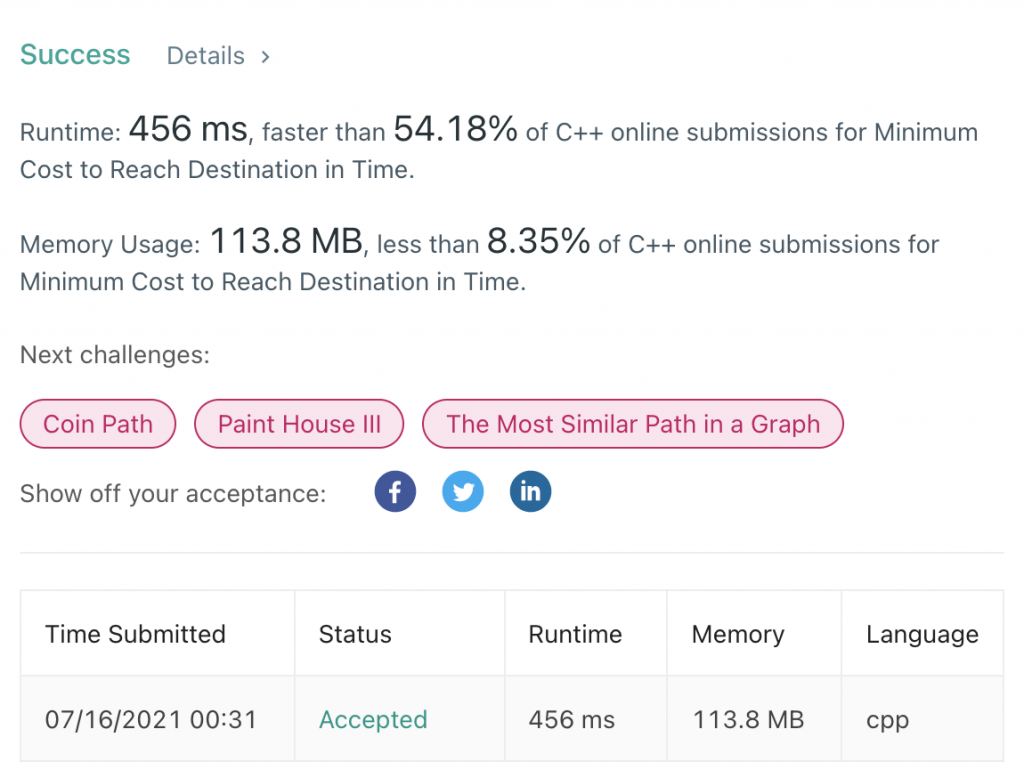Description



Submission
class Solution {
typedef pair<int,int> PII;
public:
int minCost(int maxTime, vector<vector<int>>& edges, vector<int>& passingFees) {
int n = passingFees.size();
vector<vector<PII>> graph(n);
vector<vector<int>> dp(n+1, vector<int>(maxTime+1, INT_MAX/2));
dp[0][0] = passingFees[0];
vector<int> earliestTime(n+1, INT_MAX/2);
for(auto edge: edges) {
graph[edge[0]].push_back({edge[1], edge[2]});
graph[edge[1]].push_back({edge[0], edge[2]});
}
queue<PII> q; // id, time
q.push({0, 0});
while(!q.empty()) {
auto [id, t] = q.front();
q.pop();
for(auto [newId, dt]: graph[id]) {
int newT = t + dt;
int newFee = dp[id][t] + passingFees[newId];
if(newT > maxTime) continue;
if(newT > earliestTime[newId] && dp[newId][earliestTime[newId]] < newFee) continue;
if(newFee < dp[newId][newT]) {
dp[newId][newT] = newFee;
q.push({newId, newT});
earliestTime[newId] = min(earliestTime[newId], newT);
}
}
}
int ret = INT_MAX/2;
for(int t = 0; t <= maxTime; ++t) {
ret = min(ret, dp[n-1][t]);
}
if(ret == INT_MAX/2) return -1;
return ret;
}
};
// dp[n][t]: the cost to reach node n at time t




